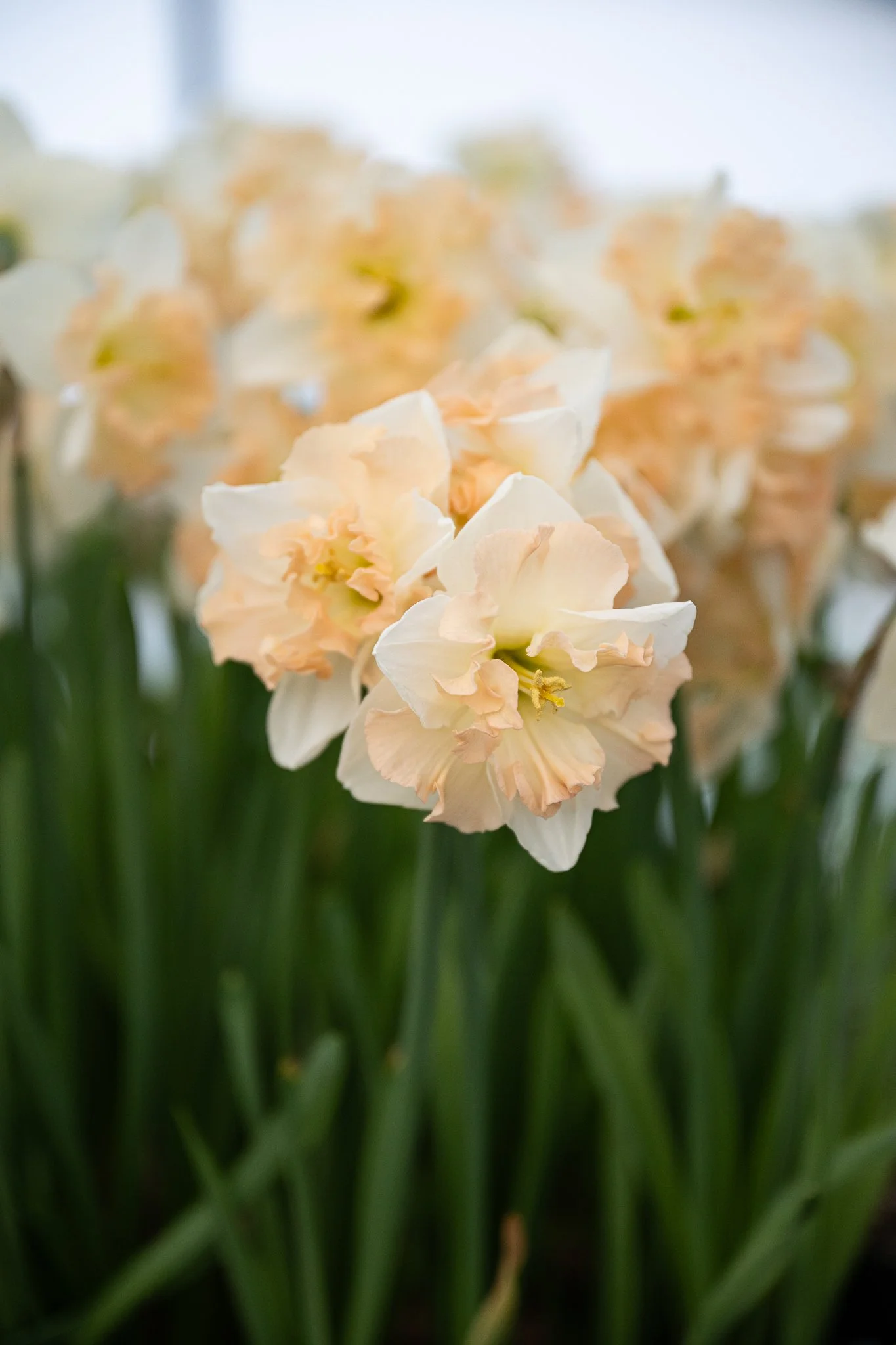Daffodil Cut Flower Production
Daffodils are a spring essential on every flower farm — cheerful, deer-proof, long-lasting, and among the first blooms to bridge the winter-to-spring transition. If you're looking to add daffodils to your cut flower lineup, success starts with smart planning and planting in the fall.
Whether you're just beginning or looking to scale up daffodil production, here’s how to set your bulbs up for strong stems, healthy blooms, and happy customers.
‘Apple Pie’ daffodil
When Should You Plant Daffodils?
Daffodils are fall-planted bulbs that need a chilling period to bloom properly in spring. Timing depends on your growing zone:
Zones 3–7: Plant from late September to early November.
Zone 8 and warmer: Daffodils can still be grown, but you may need to pre-chill your bulbs (10–16 weeks at 35–45°F) before planting.
You want to get your bulbs in the ground before the soil freezes, but after soil temps have cooled below 60°F — this encourages root growth without premature sprouting.
Where to Plant: Site & Soil Needs
Daffodils aren’t fussy, but they do have one non-negotiable:
Good drainage is critical. Bulbs left in soggy soil can rot. But please note that "good drainage” does not mean dry, either. Daffodils, like most spring bulbs require quite a lot of water during their growth period. Our spring rains here in northern New York do the trick.
Choose a spot with:
Full sun to part shade (more sun = stronger stems)
Loamy, well-draining soil (If possible. Our soil is heavy clay. We amend our beds with compost to help with drainage. If you also struggle with drainage or heavy clay, consider raised beds or amending with compost and sand.)
A pH of around 6.0–7.0
How to Prep the Soil
Before planting, loosen the soil to at least 10–12 inches deep. Work in compost or aged manure to improve structure and fertility. Avoid high-nitrogen fertilizers — daffodils prefer a balanced bulb fertilizer. We do not add any fertilizer to the daffodil beds at our trial farm. Cut flower daffodil bulbs are large and have accumulated lots of energy for production. We can top dress beds with well finished compost in future seasons if necessary.
Spacing for Cut Flower Production
To maximize your harvest per bed and encourage strong vertical growth:
In-ground spacing: Plant bulbs 4–6 inches apart in all directions.
Row spacing: If planting in rows, keep about 6–8 inches between rows.
This tighter spacing is fine for cut flower beds, especially if you plan to lift and divide every few years. It encourages upward growth and limits leaf sprawl.
How Deep Should You Plant Daffodil Bulbs?
A good rule of thumb:
Plant bulbs 3x as deep as the bulb is tall.
For most standard daffodil bulbs, that means 6–8 inches deep.
Plant with the pointed end up. Cover with soil, and water in well to settle everything into place.
Should You Mulch?
Yes — a light mulch layer helps:
Retain soil moisture
Regulate soil temperature
Suppress weeds
Use shredded leaves, straw, or composted bark. Just don’t overdo it — daffodils don’t want to stay too wet under a heavy, compacted mulch.
Watering Needs
After planting, water thoroughly once to help roots start growing. You don’t need to keep the soil moist all winter, especially in cooler regions — overwatering increases rot risk.
Once spring growth begins, you can resume watering if your season is dry.
In Sum
Planting daffodils for cut flower production is a set-it-and-forget-it task — until spring, when they repay your fall effort in full. With good soil prep, spacing, and drainage, you’ll be rewarded with strong stems and dependable blooms for your early-season bouquets.
💡 Tip: Plan Ahead
Use labels or a map to record which varieties you plant where — once the foliage dies back, it can be tough to tell them apart until next year’s bloom.
Happy planting! 🌼
Do you have a favorite daffodil variety for cutting? We’d love to hear what you’re growing or looking to add to your collection. Let us know in the comments below or email linda@ampersandbulbco.com. We love sourcing varieties for our customers and we do our best to grow our collection with products of interest to them.


